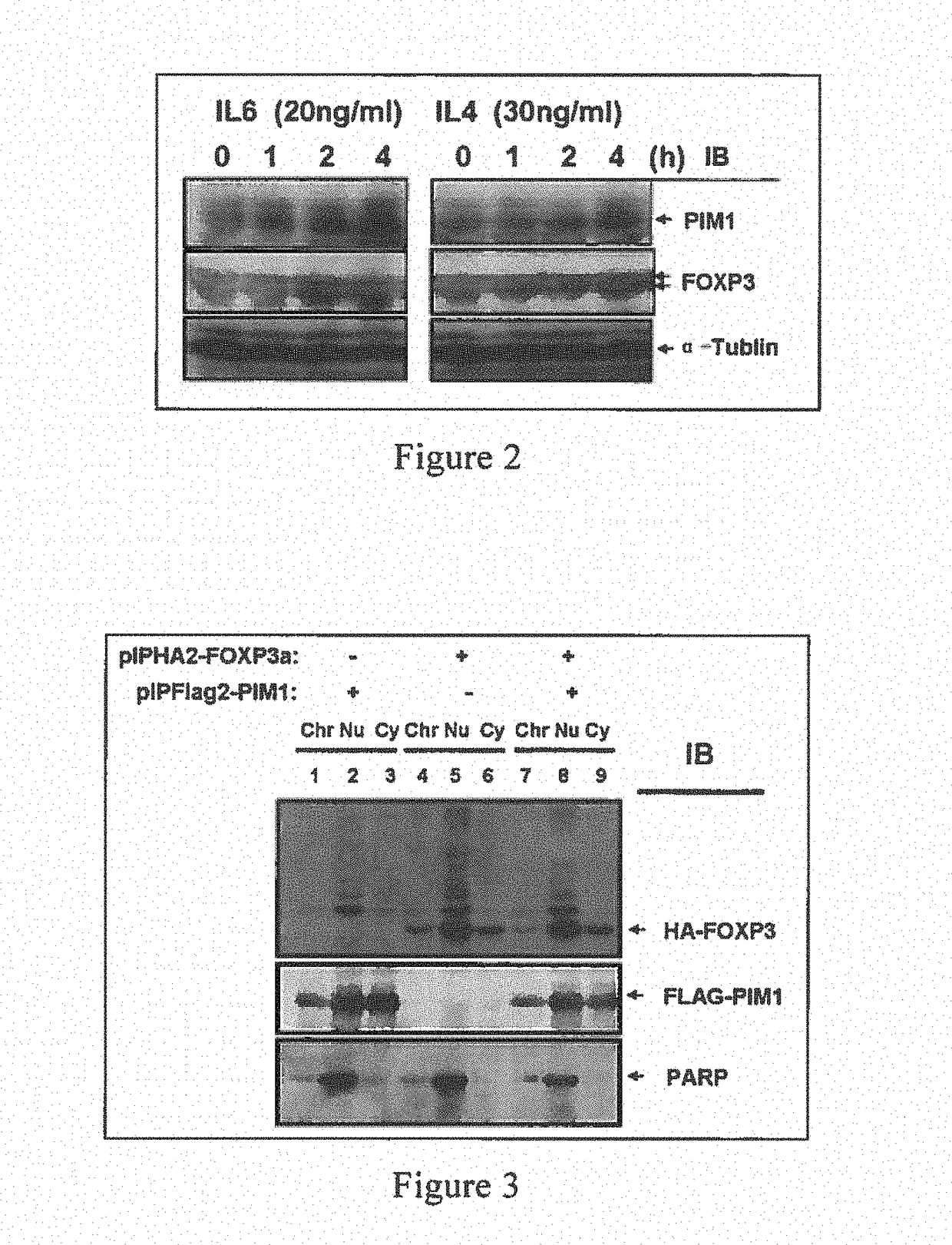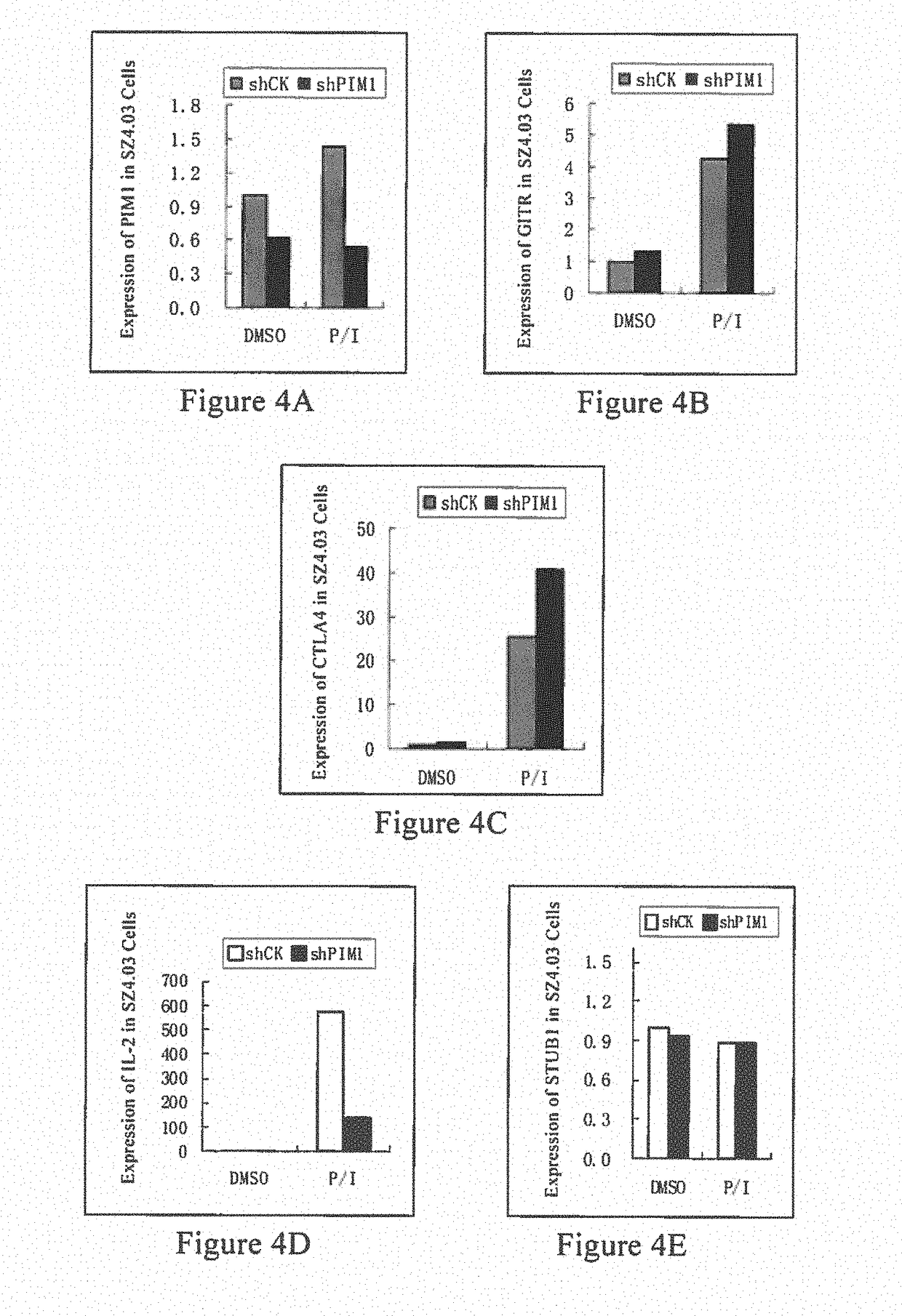Use of phosphorylation pathway-related factor in regulating function of regulatory t cell
a technology of phosphorylation pathway and regulatory t cell, applied in the field of molecular biology and biomedical, can solve the problems of many major and fundamental problems, but still remain to be solved, and achieve the effect of enhancing vaccine immunogenicity
- Summary
- Abstract
- Description
- Claims
- Application Information
AI Technical Summary
Benefits of technology
Problems solved by technology
Method used
Image
Examples
examples
[0157]The following specific embodiments further illustrate the present invention. It should be understood that these embodiments are merely used to illustrate the present invention and are not intended to limit the scope of the present invention. One skilled in the art may make suitable modifications and changes to the present invention. These modifications and changes, however, are within the scope of the present invention.
[0158]Conventional methods in the art may be used for experimental methods not specified in the following examples, such as those referenced in “Molecular Cloning, A Laboratory Manual” (third edition, New York, Cold Spring Harbor Laboratory Press, 1989), or in accordance with conditions recommended by the suppliers. DNA sequencing methods are conventional methods in the art, and tests can also be provided by commercial companies.
[0159]Unless otherwise indicated, percentages and parts are calculated by weight. Unless otherwise defined, all professional and scient...
example i
Materials and Methods
[0160]1. Plasmids and Vectors:
Referring to Reference 4, cloning and constructing N-terminal FLAG-tagged FOXP3, PIM1, and other plasmids (plPFLAG2 and plPFHA2 are eukaryotic expression vectors; pET28a and pET21-MBP prokaryotic expression vectors) and lentiviral packaging vector plasmids (FUGW, dR8.9, and VSV-G).
[0161]PIM1 gene was obtained from amplifying human peripheral blood mononuclear cell cDNA library. Primers were designed according to the sequences downloaded from Genbank as follows:
SEQPrimerID NO:SequencePIM1-upstream15′-GAGGAATTCGATGCTCTTGTCprimerCAAAATCAACTC-3′PIM1-downstream25′-GAGGGGAGGACCTGCCAGAAAprimerG-3′
[0162]2. Antibodies:
Flag antibodies (M2) were purchased from Sigma. FOXP3 antibodies (hFOXY) were purchased from eBioscience. PIM1 antibodies were purchased from Santa Cruz. pS422-FOXP3 antibodies were custom made by Abmart Inc. HRP-conjugated anti-mouse secondary antibodies were purchased from Promega.
[0163]3. Cells and Treatments:
Human HEK293T c...
example i-1
roto-Oncogene Encoded Protein PIM1 on FOXP3
[0176]HEK293T cells were co-transfected with HA-FOXP3 and FLAG-PIM1. After 48 h, cells were collected. After lysed with RIPA buffer, immunoprecipitated using FLAG antibody, and then immunoblot was performed using corresponding antibodies (results shown in FIG. 1A). The results show: FLAG-PIM1 can be co-precipitated with HA-FOXP3.
[0177]HEK 293T cells were co-transfected with HA-FOXP3 or its Ser422 mutant and FLAG-PIM1 or its enzymatic activity-deficient mutant K67M. After 48 h, cells were collected. After lysis, immunoprecipitated using HA antibody and then immunoblot analysis was performed using pS422-FOXP3 antibody and other suitable antibodies (results shown in FIG. 1B). The results show: FLAG-PIM1 can phosphorylate Ser422 of HA-FOXP3.
[0178]Immunoblot analysis was performed after MBP-FOXP3 and His-PIM1 and its K67M mutants were expressed by prokaryotic cells and FPLC purified, and reacted in vitro, in the presence of ATP. SDS-PAGE was per...
PUM
| Property | Measurement | Unit |
|---|---|---|
| temperatures | aaaaa | aaaaa |
| pH | aaaaa | aaaaa |
| pH | aaaaa | aaaaa |
Abstract
Description
Claims
Application Information
 Login to View More
Login to View More - R&D
- Intellectual Property
- Life Sciences
- Materials
- Tech Scout
- Unparalleled Data Quality
- Higher Quality Content
- 60% Fewer Hallucinations
Browse by: Latest US Patents, China's latest patents, Technical Efficacy Thesaurus, Application Domain, Technology Topic, Popular Technical Reports.
© 2025 PatSnap. All rights reserved.Legal|Privacy policy|Modern Slavery Act Transparency Statement|Sitemap|About US| Contact US: help@patsnap.com



